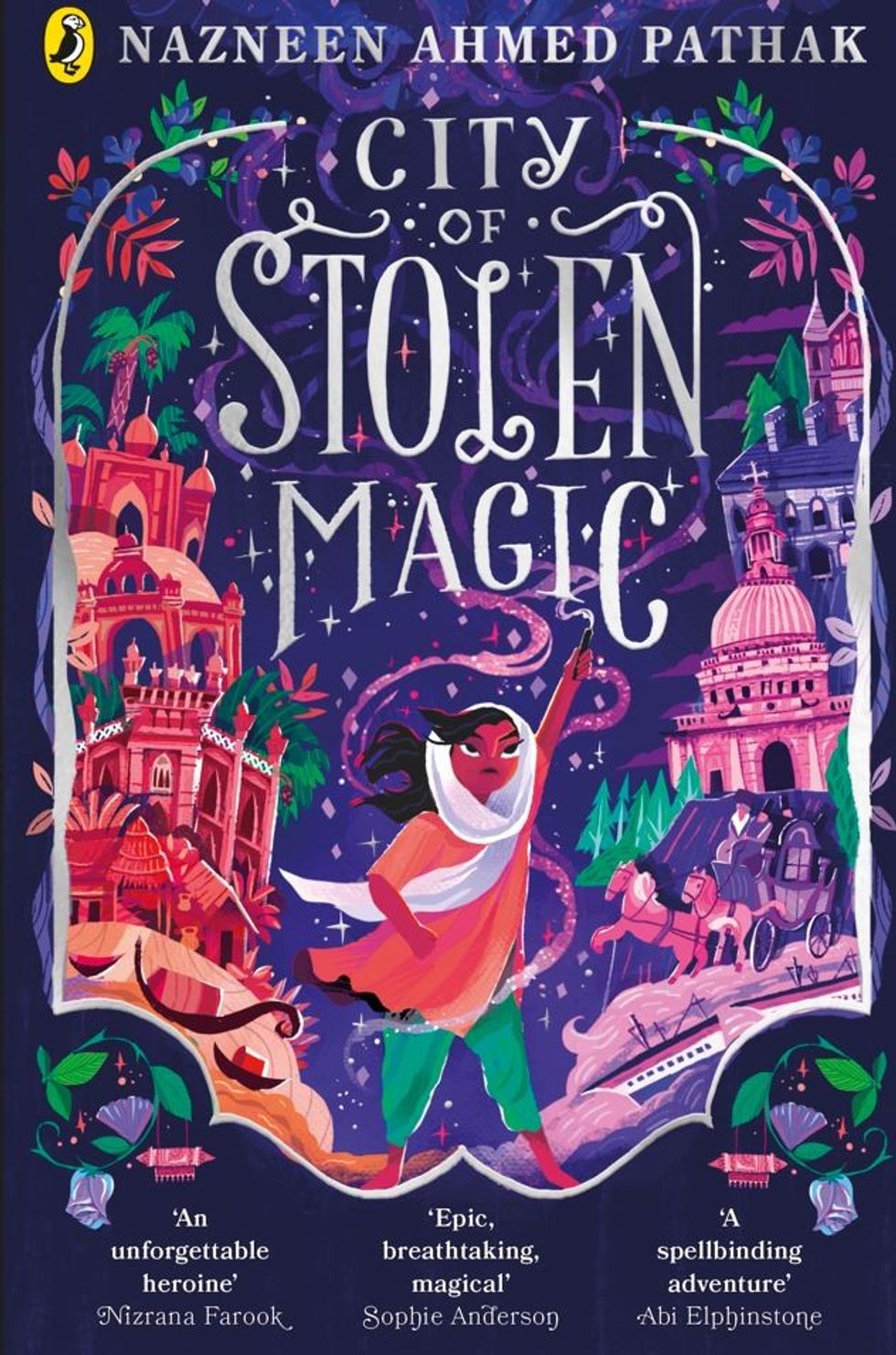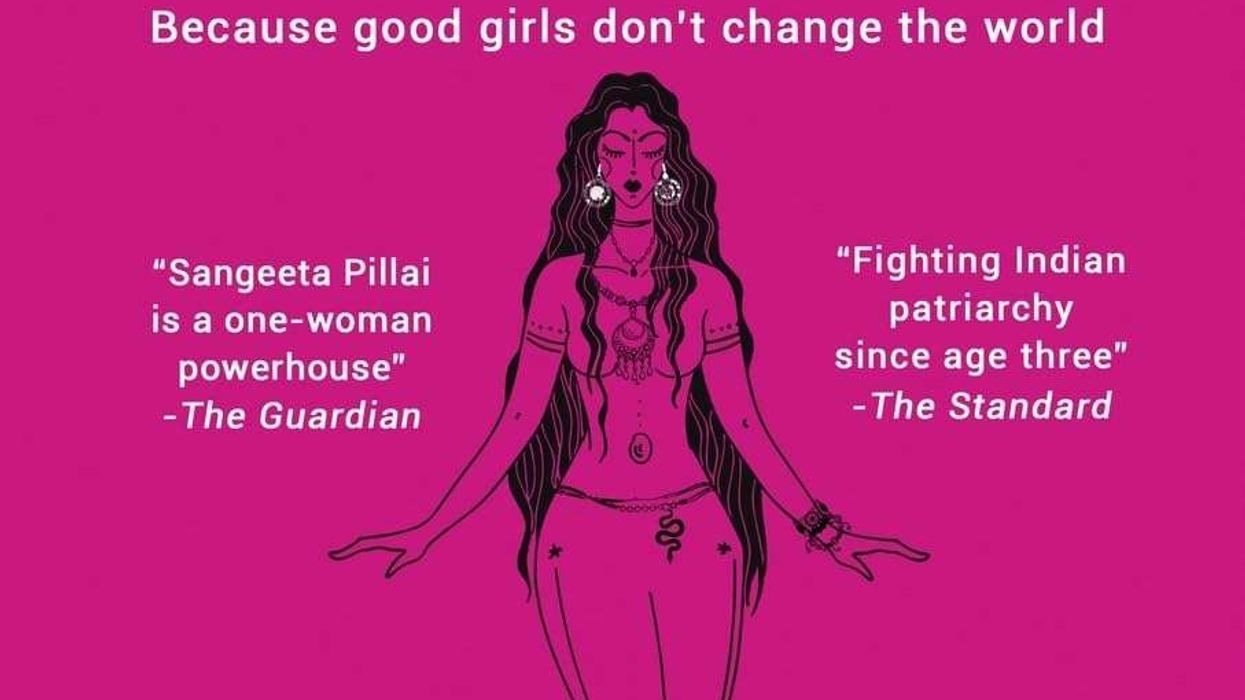A LOVE for reading and seeing books as a dream-like escape inspired Nazneen Ahmed Pathak to write, but that stopped in her twenties because there wasn’t a story she wanted to tell.
Things changed after her son Roshan was born in 2013. She was reading a children’s book to him and realised there weren’t any stories about his heritage as a British-Indian-Bangladeshi child. Her young son reconnected Pathak to that writing passion and inspired her dynamic debut novel City of Stolen Magic.
The beautifully written book mixing up magic with history, and a 19th century multicultural Victorian London, revolves around a young Indian girl with mystical powers on a rescue mission in new surroundings. One of the most unique books of the year introduces a new type of literary hero and great British writing talent, who has offered up something unique.
Eastern Eye caught up with the writer to discuss her book, which beautifully blends history, magic, and culture.
Tell us about City of Stolen Magic?
The story follows Chompa, the fierce, impulsive, ever-curious heroine, and her mother, Ammi, who are both witches. Chompa’s not allowed to do her magic because Ammi says she’s not old enough to control it. Instead, Ammi’s tries teaching her writing magic, which is intricate, precise and takes time. Chompa finds it boring and decides to take matters into her own hands, which ends in disaster when Ammi’s abducted by a sinister group called the Company, who Chompa later finds out are selling magical people for profit. To get Ammi back, Chompa travels to London on a ship, powered by a djinn, making friends and enemies along the way.
What made you want to combine history and magic in the story?
I see my writing as the ‘embroidering of untold stories’, so wanted to bring to life untold histories and lesser-known forms of magic in this story. Until I worked on a research project on the history of East London, I didn’t know that the reason Brick Lane is now ‘Banglatown’ stems from the lodging houses run in the area by South Asian sailors, known then as ‘lascars,’ in the Victorian period. So, until I was well into my thirties, I had no idea how colonialism had been responsible for establishing the migrant community I am part of. When I learnt that, it made something in me click.
Tell us more about that?
It made my identity and sense of belonging as a British Bangladeshi person make sense. I wished I had known it when I had been a child, whenever anyone used to ask me where I was ‘really’ from. So, I really wanted to weave a story around it, and make it come to life for children like Roshan and Khushi, my daughter.
What about the fantasy element of your book?
I’ve always loved fantasy stories about magic, witches, and wizards, but grew up with a very different idea of magic than the pointy-hat and magic-wand variety we see in most children’s books. I wanted to weave in the stories I grew up with when I visited Bangladesh as a child - stories of bhoot, djinn and amulets. At the same time, I have always been fascinated by the taviz, Islamic amulets members of my family used to wear; capsules containing slivers of paper featuring Quranic verses, because they really show the protective power of the written word.
Did it help or make it more challenging that you are venturing into new territory with this book?
I think the fact that the story is new and different is definitely a strength, but it’s also a risk, and that’s a little daunting, I suppose. But no one wants to read the same story over and over again, and it’s a great time right now for readers of children’s books – there’s something out there for everyone.
Who are you hoping connects with City of Stolen Magic?
Everyone, really. The history and legacy of colonialism is important for us all to know and understand. But I really hope it connects with children who have South Asian heritage, because I wove so much of my love of India and Bangladesh into this story, from languages to food to dress, that I hope it really finds a home with them.
Do you have a favourite part or chapter in the book?
I love the scene where Chompa and Leeza take a cycle rickshaw to explore the chowk market in Dacca and discover the printing press. My grandfather had a printing press and bookshop and the whole scene really comes from my own love of Old Dhaka, which is a unique and historic place. I feel really homesick whenever I read it.
Did you learn anything new while writing this book?
I had no idea how to write a book when I began, so, absolutely I did. I learned so much about how to tell a story that’s exciting and will connect with young readers from my Puffin editors Natalie Doherty and India Chambers, and my agent, Louise Lamont, but I also learned from reading amazing authors such as Catherine Johnson, Philip Pullman, Nizrana Farook, Jonathan Stroud and Patrice Lawrence.
How do you feel ahead of the book’s publication?
I feel very excited – it’s been a 10-year journey to this point. It feels like I am in one of my vivid daydreams. I am so thrilled that Puffin have taken me and the story under their wing, and done us such justice. I just can’t wait for the book to get into the hands of young readers and their parents and teachers. I just hope they like it.
How much has all the praise meant to you for this book?
It’s been extraordinary – the praise from authors I love has been so humbling. And those children, who have read it so far, loving it has meant the absolute world to me. I am quite the crier and have cried every time someone has written to me and told me they liked the story. It never gets old.
What kind of books do you enjoy reading the most?
I love reading children’s stories – I think they’re the best writing, full stop. You can’t have a character staring out of a window for two pages in a children’s story. There’s no indulgence – just story, character and setting in their leanest and best form. I love mysteries such as Sharna Jackson’s Hi-Rise Mystery, historical adventures such as JT Williams’ Lizzie and Belle series, and I recently adored The Swifts by Beth Lincoln.
What can we expect next from you?
Chompa, Tipu, Leeza and Laurie are going to have further adventures so I am currently working on the second book, which will feature rebel queens, bandits and an important quest to find a mysterious magical object.
Why do you love writing?
I love being immersed in imaginary worlds where anything and everything can happen and all the characters you end up meeting along the way. To me, it’s like being on a rollercoaster, only fun (I am a scaredy-cat).
Why should we pick up the book?
Because Chompa is the most dynamic and loveable heroine you could meet, because the adventure is thrilling and spans continents. Because the magic is unique and empowering, and it tells stories of a history we all need to know and talk more about.
City Of Stolen Magic will be published byPuffin next Thursday (29)













